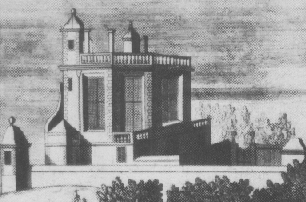


Construction of the Royal Observatory at Greenwich began in 1675. The observatory was designed by Sir Christopher Wren, noted mathematician, Professor of Astronomy at Gresham College and Savilian Professor of Astronomy at Oxford. He was created "Surveyor General and Principal Architect" for the rebuilding of the city after the Great Fire of 1666 and Surveyor of the King's Works.
Sir Isaac Newton (who built the first reflecting telescope in 1669) speaks of 6 planets: Mercury, Venus, Earth, Mars, Saturn and Jupiter. He speculated that as the core of the earth is known to be hotter than heat received from the sun, Saturn and Jupiter might also be warmed from within.
In 1677, the Astronomer Royal, Edmund Halley, observed the transit of Venus. In 1682, on observing a comet he checked the records and discovered that the comet had returned every 76 years and is the same comet that was seen shortly before the Battle of Hastings. This comet now bears Halley's name.
The diarist John Evelyn proposed that the site of Greenwich Old Palace be used to build a Royal Hospital (almshouse) for sailors. But as Charles II lacked the money to pay for his sailors even while they were still in his service, Evelyn's scheme for a hospital at Greenwich languished until 1692, when he and Sir Christopher Wren laid the foundation stone.



